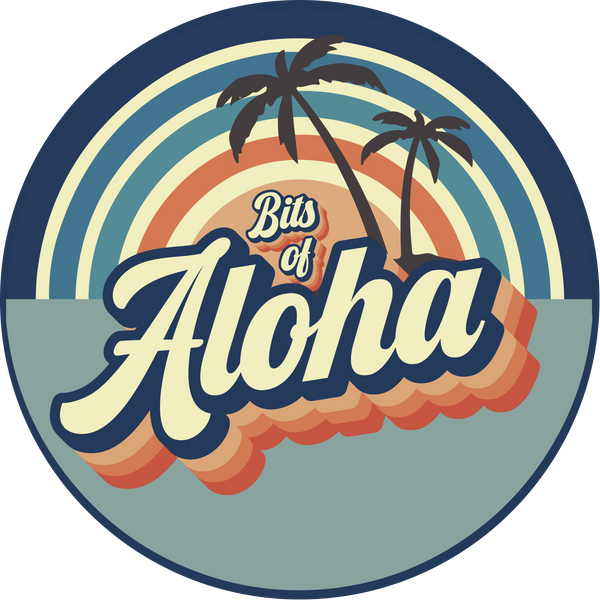
The Influence of Surfing on Hawaii’s Fashion: A Cultural Evolution
Share
The Roots of Surf Culture in Hawaii - Surfing, or heʻe nalu, has been an integral part of Hawaiian culture for centuries. It was more than just a sport; it was a way of life for Native Hawaiians, deeply connected to spiritual beliefs, social hierarchy, and communal identity. The ruling class, or aliʻi, were often the most skilled surfers, with access to the best waves and custom-crafted wooden surfboards.
Early Hawaiians wore malo (loincloths) for men and paʻu (skirts) for women when surfing, allowing them freedom of movement while riding waves. These traditional garments set the foundation for the functional and relaxed approach to clothing that continues to shape Hawaiian surf fashion today.
The Introduction of Western Influences and the Birth of Modern Surfwear
The arrival of Westerners in the 18th and 19th centuries brought significant changes to Hawaiian fashion. Missionaries introduced modest Western-style clothing, which influenced local dress but never fully replaced the practical, lightweight garments suited for the island’s tropical climate.
By the early 20th century, surfing saw a revival led by figures like Duke Kahanamoku, an Olympic swimmer and surfing ambassador. Duke’s global influence in promoting surfing brought Hawaiian surf culture to the world, and with it, a distinctive island style. Early surfers adopted boardshorts and simple cotton shirts, laying the groundwork for modern surf fashion.
The Evolution of Surfwear in the 20th Century
In the 1950s and 1960s, the growing popularity of surfing, particularly in Hawaii and California, led to the development of specialized surfwear. Companies like Jantzen and Hang Ten started producing shorts designed specifically for surfers, using durable materials like twill and nylon to withstand the rigors of the ocean.
During this period, aloha shirts also became associated with surf culture. Initially worn as casual resort wear, they transitioned into surf fashion when surfers embraced their relaxed, tropical aesthetic. Brands such as Reyn Spooner and Kahala began incorporating surf motifs into their prints, further merging surf culture with mainstream Hawaiian fashion.
By the 1970s, major surf brands like Quiksilver, Billabong, and Rip Curl emerged, bringing innovations such as velcro waistbands and quick-drying fabrics to boardshorts. These styles were heavily influenced by Hawaiian surfers, who needed durable, comfortable gear for long hours in the water. The vibrant prints and bold colors seen in boardshorts were inspired by the natural beauty of Hawaii—palm trees, ocean waves, and volcanic landscapes.
Surfing’s Influence on Hawaiian Fashion Today
In the 2020s, surfing remains one of the most significant influences on Hawaiian fashion. The style that originated from practical surfwear has now blended with contemporary trends, influencing everything from casual streetwear to high-end fashion. The modern surf-inspired aesthetic in Hawaii incorporates the following key elements:
1. Boardshorts and Hybrid Shorts
Boardshorts are no longer just for the beach—they have become an everyday staple for many Hawaii residents. Modern boardshorts are made with lightweight, stretchable, and eco-friendly materials that make them comfortable for both water and casual wear. Hybrid shorts, which blend the functionality of boardshorts with the aesthetic of everyday shorts, are popular for their versatility, allowing wearers to go from the beach to a restaurant without changing.
2. Rash Guards and Surf Tops
With increased awareness of sun protection, rash guards (tight-fitting, quick-drying shirts) have become essential in Hawaii’s surf fashion. These shirts, originally designed to prevent chafing from surfboards, are now worn by both surfers and non-surfers for UV protection. Modern rash guards come in stylish cuts and patterns, often incorporating Polynesian tribal designs or ocean-inspired prints.
3. Aloha Shirts with a Surf Twist
While traditional aloha shirts have been a part of Hawaiian fashion for decades, modern designs reflect a strong surf influence. Many contemporary brands create aloha shirts featuring surfboards, waves, and tropical motifs, blending the relaxed island lifestyle with the adventurous spirit of surfing. Companies like Tori Richard, Kahala, and Sig Zane Designs continue to evolve these styles, appealing to both locals and visitors.
4. Surf Brand Streetwear
Big-name surf brands like Quiksilver, Billabong, Volcom, and Roxy remain dominant in Hawaii’s fashion landscape. However, local surf-inspired brands such as In4mation, Sig Zane, and Aloha Beach Club have emerged, offering a unique mix of island aesthetics and urban streetwear. These brands emphasize sustainability, cultural heritage, and modern design, creating apparel that resonates with both surfers and everyday residents.
5. Sustainable and Eco-Friendly Materials
With growing concerns about the environment, many Hawaiian surf fashion brands are focusing on sustainability. Materials such as recycled polyester, organic cotton, and hemp blends are being used to produce boardshorts, rash guards, and casual wear. Sustainable brands like Patagonia and Outerknown (founded by surfer Kelly Slater) have influenced the industry, pushing Hawaiian surf fashion toward eco-conscious choices.
6. Footwear: Slippers (Flip-Flops) and Sandals
Surf culture has cemented slippers (flip-flops) as the footwear of choice in Hawaii. Brands like Scott Hawaii, Locals, and Olukai have created durable sandals designed for both comfort and function. Many styles incorporate water-resistant materials, making them ideal for both beach and everyday wear.
7. Hats and Accessories
Caps and trucker hats featuring surf brands, Hawaiian imagery, and custom prints are a common sight in Hawaii. Many local surf shops design their own unique hats, often embroidered with surf-inspired logos or island motifs. Woven lauhala hats, a traditional Hawaiian accessory, have also made a comeback, merging cultural heritage with modern surf fashion.
Surf Culture’s Influence on Everyday Hawaiian Style
Beyond the clothing itself, surfing has shaped the overall approach to fashion in Hawaii. The laid-back, comfortable, and functional style that surfers pioneered has influenced how residents dress in everyday life. In the 2020s, there is a noticeable shift toward athleisure-inspired surf fashion, where performance fabrics and versatile designs dominate casual and professional settings alike.
Hawaii’s fashion scene also embraces gender fluidity and inclusivity, much like the diverse and welcoming nature of surf culture. Many surfwear brands now offer unisex designs, oversized fits, and inclusive sizing, reflecting the openness of both Hawaiian and surfing communities.
The Global Impact of Hawaiian Surf Fashion
Hawaiian surf fashion has extended far beyond the islands, influencing streetwear and high fashion worldwide. Major fashion houses such as Prada, Louis Vuitton, and Gucci have incorporated surf-inspired elements into their collections, proving that the relaxed yet adventurous aesthetic of Hawaii’s surf culture has universal appeal.
Additionally, social media and digital influencers have helped spread the popularity of Hawaiian surf fashion. With platforms like Instagram and TikTok, local designers and surf brands can reach a global audience, showcasing the fusion of island tradition and modern trends.
Conclusion
Surfing has played an essential role in shaping Hawaiian fashion, influencing everything from boardshorts and rash guards to aloha shirts and streetwear. The sport’s impact extends beyond clothing, embodying a lifestyle that prioritizes comfort, functionality, and a deep respect for nature. In the 2020s, Hawaiian surf fashion continues to evolve, integrating sustainability, inclusivity, and modern design while staying true to its island roots. Whether on the waves or on the streets, the influence of surfing on Hawaii’s fashion remains undeniable, solidifying its place as a cultural and stylistic force in the world of apparel.
